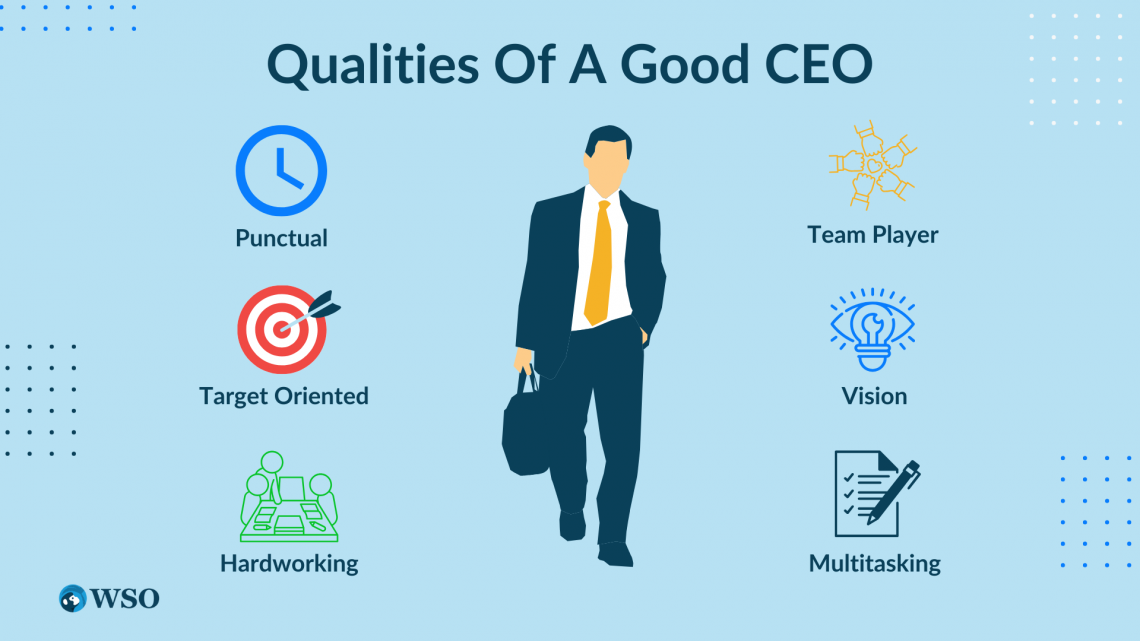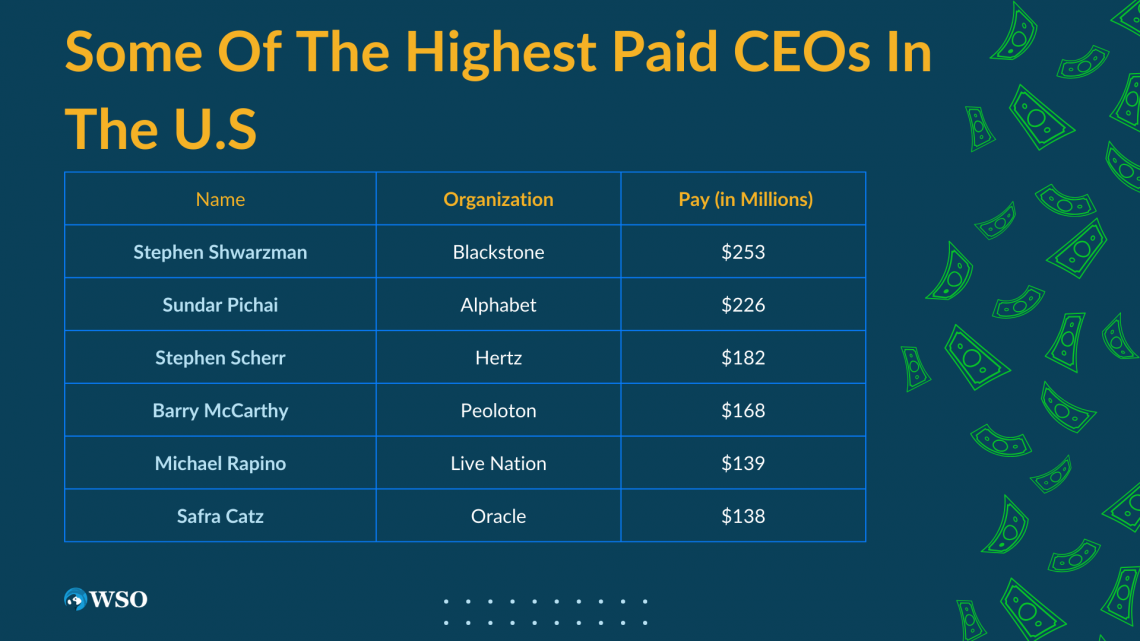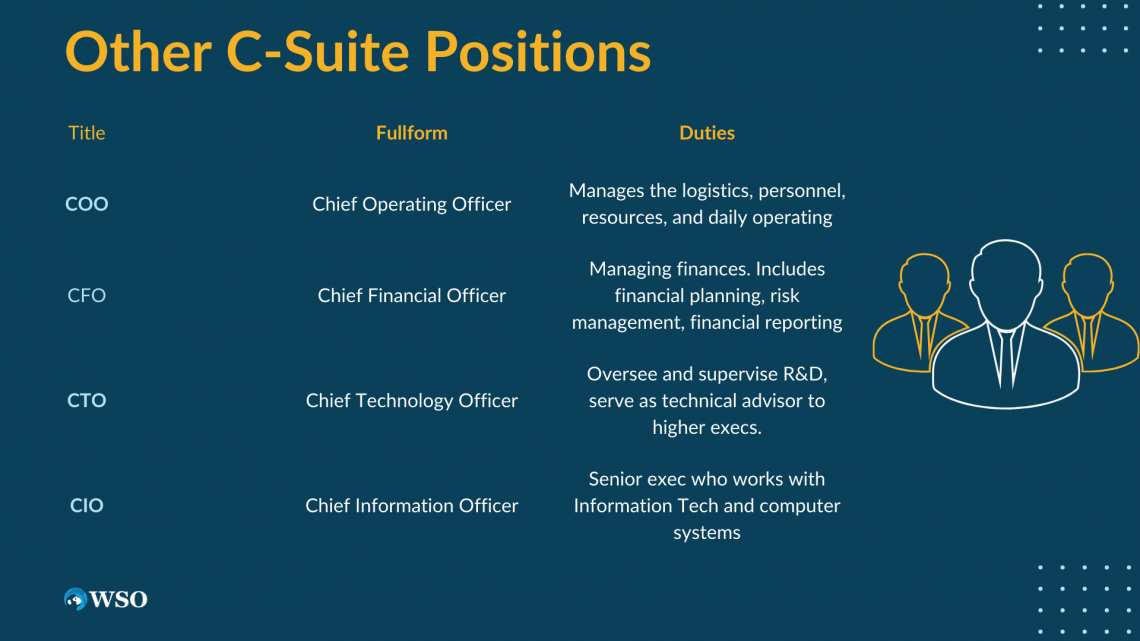CEO
The chief executive officer, or just chief executive, is the highest-ranking corporate officer who is in charge of managing an organization
What is a CEO?
The chief executive officer, or just chief executive, is the highest-ranking corporate officer managing an organization.

The chief executive typically reports directly to the company's board of directors and is responsible for implementing the organization's strategic plan, including its business, marketing, and financial goals.
The board of directors comprises influential individuals appointed by shareholders to protect their interests.
The Chief Executive Officer also oversees all aspects of a company's operations, including day-to-day business management, and is one of the highest-paid employees in an organization.
The Chief Executive Officer is considered the face of the organization and is assigned to implement the values within the organization and work to ensure that the firm's mission and vision are fulfilled.
The company's success or failure is often associated with the Chief Executives, which is why they are usually paid higher wages to help shareholders earn good returns on their employed capital.
Key Takeaways
- The CEO is the top executive in a company, responsible for strategy, operations, and financial goals.
- CEOs oversee daily business management, report to the board of directors, and are well-paid.
- Good CEOs make swift decisions, have business sense, exhibit leadership, and communicate a clear vision.
- CEOs' pay has surged in recent years, and their influence can impact markets and organizations.
- The distinction between CEO, President, and Chairman roles is crucial for effective corporate governance.
What are the duties of a CEO?
A Chief Executive Officer's role may differ depending on the organization's size and hierarchical structure.

In large organizations such as Tesla and Microsoft, the chief executives typically deal with the company's growth drivers and strategic decisions that lead to acquiring more market share.
On the other hand, small organizations may have chief executives more involved in daily business operations, devising and implementing marketing campaigns to attract new customers for existing or new products and services.
The primary duty of a Chief Executive Officer is to manage and direct all aspects of a company according to its strategic plan and vision. Along with the board of directors, they set up long-term revenue growth, R&D, and wealth maximization strategies.
Their duties may include:
- Supervising all financial matters within an organization along with the CFO
- Negotiating with vendors regarding contract terms and managing the organization's human resources
- Setting goals for future sales and growth
- Managing the company's image in the public eye
- Build a capable team of executive leaders within the company
- Assess risk and opportunities in new business ventures and expansion opportunities
- Ensuring compliance to Environmental, Social, and Governance (ESG) to demonstrate sustainability objectives resulting in long-term value creation for the shareholders
- Recommend the budget for the next fiscal year, review annual reports that comply with Generally Accepted Accounting Principles (GAAP), and make tax decisions.
Basic Corporate Structure
Private companies' transformation into public ownership has separated management from primary owners.

Before the 20th century, many businesses, such as Ford Motors and Walmart, were family-run, meaning that the decisions were in the owners' interest. However, since listing on the stock exchange raises more money to run the business, the stockholders primarily have a vested interest in the company's financial well-being.
Most firms establish a two-tier corporate structure consisting of the board of directors and C-suite members to protect the stockholders' interest. The corporation's shareholders appoint the board of directors' first tier.
The second tier consists of the executive leaders hired and assessed by the board of directors to run the organization. Such as the:
- CEO
- CFO
- CTO
- CMO
- CIO
The tiers of the corporate structure work together to maximize the shareholders' wealth.
What are the qualities of a good chief executive Officer?
It can be challenging to fill in the role of Chief Executive Officer. Most fall out with the organization's board members, leading to coerced dismissals.

A good Chief Executive Officer has skills and characteristics that enable them to lead a company effectively. The most important qualities include the following:
1. Decision-making skills
- Must be able to make decisions daily that will impact the business long-term.
- Should be able to steer the ship in all kinds of storms rather than wait for deputies to guide them during a crisis.
- The faster they make decisions, the greater the displayed conviction board members have in them, further allowing chief executives to make significant changes in an organization's strategy.
- If a decision is made too slowly, competitors may enter that market first; if made too quickly, it may not be accurate enough for the business's long-term success.
2. Business sense
Must understand business practices in a manner that leads to the desired outcome and manage situations (new opportunities), including:
- Marketing
- Sales
- Finance
- Accounting
- Management
Should be adaptable to changing business scenarios and reinvent strategies wherever possible to keep the business running.
3. Leadership skills
A chief executive should have a clear vision for the foreseeable future as they are the ones who stand on top of the mountain peak.
In addition, they need to be ambitious and optimistic about the goals that help to inspire others, which ultimately acts as an essential tool in displaying leadership.
4. Vision
Along with a clear vision, the Chief Executive Officer must be able to communicate the whole idea compellingly.
Vision makes everyone feel like being a part of a group and understanding their responsibilities in contributing to the mission, values, and overall business strategy.
How much does a chief executive earn?
Today, Chief Executives in the US earn far more than they used to do in the early 80s. But, then, their pay comprises a basic salary along with stock-related compensation.

According to the report published by the Economic Policy Institute, CEOs earned 351 times more than the average worker in 2020.
Even though the pandemic had affected the payscale for every working class and left many unemployed, Chief Executive Officer's remunerations jumped by 18.9% in a year. This jump in payscale is mainly due to the celebrity status of some chief executives running America's largest corporations.
Celebrity status will bring additional revenue to the organization through sales or business expansion opportunities. The celebrity phenomenon is not new. It also existed in the early 20th century in the form of Henry Ford and John D Rockefeller, who would be at the forefront of every newspaper.
In today's era, to name a few, some examples of individuals who obtained this status are:
- Elon Musk
- Donald Trump
- Mark Zuckerberg
- Satya Nadella
- Tim Cook
- Jamie Dimon
At the time of publishing this article, the current net worth of Elon Musk is $276.8 Billion from his several ventures such as Tesla, SpaceX, Neuralink, etc. There were two instances in 2021 that demonstrated how influential they are and why their words matter in financial markets.
1. Elon Musk's view on DogeCoin
DogeCoin was brought into existence as a joke. Still, a series of Tweets and random mentions about the altcoin sent its price over the roof, creating unnecessary volatility in the crypto markets.
In his interview with Bloomberg, Binance Chief Executive Officer Chagpeng Zhao stated, "I think Elon Musk wants to be a humorous guy... But he must realize that his tweets have the power to move markets."
Elon Musk intends to launch a spaceship to the moon fully funded by Dogecoin in 2022.
2. Elon Musk will pay his taxes
At the end of 2021, Elon tweeted that he would be paying $11 Billion in taxes on criticism that he has not been paying taxes as compared to the company's profits.
He intended to do this by selling 10% of his stake, causing chaos among the other shareholders of Tesla. Consequently, Tesla Inc fell 4.5 percent on the next trading day.
This demonstrates executives' sphere of influence and why they are highly compensated for running an organization.
Other C-suite positions
American corporations have several other influential positions for senior executives.

The C-suite, also called the 'Chief' suite, is made up of:
- Chief Operating Officer (COO)
- Chief Financial Officer (CFO)
- Chief Information Officer (CIO)
- Chief Marketing Officer (CMO)
- Chief Technology Officer (CTO)
- and others
For big conglomerates, these positions are assigned to different individuals. However, a single person can hold the chief executive, CFO, or COO position for small startups and business ventures.
The Chief Executive Officer manages the company's public image and makes major strategic decisions by consulting other C-suite personnel.
The CFO oversees the financial risk and benefits of investing and financing new business opportunities. The CIO begins as a software engineer or business analyst honing their programming and coding skills and applying them to various business strategies.
Finally, the COO and CMO are the leaders of the human resource and marketing departments, respectively.
What is the difference between a CEO and a President?
A Chief Executive Officer is the highest-ranking corporate officer of an organization. The President is usually the second in command and reports to the board of directors.

Smaller organizations may merge the Chief Executives and President positions. The role of the President is assigned considering the size of organizations with different verticals for the company.
The President may sometimes be assigned the COO position as their tasks are similar to that of the Chief Executive Officer. The President also oversees the duties of other vice presidents and higher-level managerial positions in the organization.
For example, a financial institution may have independent research, Big Data, and automation departments spearheaded by different Vice Presidents (VPs). Vice Presidents ultimately report to the President, who further takes these reports to the chief executive and the board of directors.
While the President's general duties are managing the organization's day-to-day operations and financial budget, they may vary in different parts of the world and based on the organization's hierarchy.
What is the difference between CEO and Chairman?
The Chief Executive Officer is responsible for daily operations, while the Chairman is not present to perform daily functions.

A Chairman is the senior most elected or appointed board of directors member who presides over meetings and ensures they run smoothly by keeping discussions on track, enforcing rules, and ensuring everyone can discuss issues.
While the chief executive reports to the board of directors, the Chairman manages the board members. The Chairman may formulate policies that protect the investors' interests. Some of the primary duties of the Chairman are:
- Represent the shareholders in board meetings and debates to protect their interest
- Establish long-term business goals through strategic planning
- Set up board meetings with other members to discuss agendas that affect the business objectives
- Ensuring the organization's survival by achieving financial targets and maintaining business stability
Some companies appoint chief executives who also serve as the Chairman of the board of directors. Although such practice can speed decision-making, it conflicts with the organization's corporate governance.
Reasons to Separate the CEO and Chairperson Positions
Small businesses and startups can have individuals who work in the dual role of Chief Executive Officer and Chairperson of the board to establish a straightforward corporate philosophy and make better decisions.

However, there are two important reasons why these two positions should be separated in all organizations:
1. Compensation
The Chairperson is the most influential person on the board of directors. If the chief executive holds this position, they can discuss and vote to increase their compensation.
This breaches the shareholder's confidence, who rely on the board to protect their interests, as any compensation increase comes at the shareholders' profit expenses.
The chair can influence the independent executives of the board, which is why they must refrain from acting as the Chairperson.
2. Corporate Governance
To allow a founder to act as the Chairperson means opening the door for the abuse of the position.
Independent individuals not associated with the organization strictly follow the law to monitor the business and protect the shareholder's interest.
Since management cannot be involved with the audit committee, it is better to appoint an independent chairperson than CEOs in a dual role who may limit the audit committee's effectiveness by abuse of power.










or Want to Sign up with your social account?